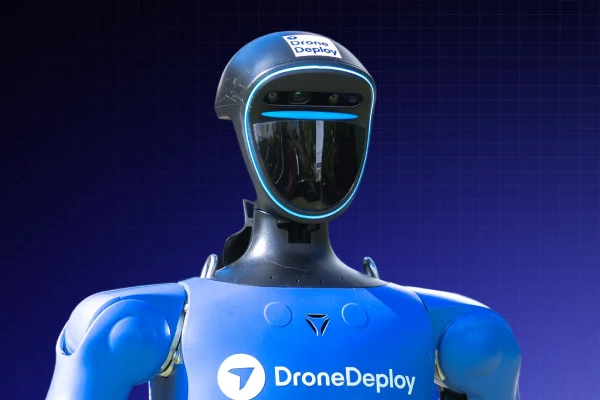The Ultimate Drone Glossary: Part 1

Quick Summary
We're excited to present part 1 of our complete list of essential drone terms for pilots, professionals, and enthusiasts. Check back every week for new terms, or download our eBook to share across your organization.

A
Accelerometer: An instrument within the drone’s central processing unit that measures acceleration. This is primarily used for flight stabilization purposes.
AGL (Above Ground Level): In aviation, AGL refers to the height or altitude of the drone as compared to the ground surface. If a drone is flying 250 feet above a 100-foot building, the AGL is 350 feet.
Altitude Hold Function: In this flight mode, the drone maintains a consistent altitude through its onboard barometric pressure sensor. However, the pilot can still control the roll, pitch, and yaw in this setting.
AMA (Academy of Model Aeronautics): A nonprofit, self-supporting organization that promotes model aviation, including drones, and drone use as a recreational activity.
A Mode: Abbreviation for Atti or Attitude Mode, wherein the drone will maintain a consistent altitude.
ARTF or ARF (Almost Ready to Fly): The standard for drone operations, drones that are pre-built, or require minimal assembly before flying.
ATC/ATM (Air Traffic Control or Management): A service in which air traffic controllers on the ground direct traffic within controlled airspace, and advise those in non-controlled airspace. These individuals are trained and administered by the FAA.
AUW (All Up Weight): The maximum weight of the drone, including batteries and other add-ons.
Autonomous Aircraft: The International Civil Aviation Organization classifies autonomous aircraft as, “unmanned aircraft that does not allow pilot intervention in the management of the flight.”
Autonomous Flight: In the drone world, this is flight guided by GPS, without intervention from the pilot.
Autopilot: Drone feature that allows the flight to continue without manual control by the pilot.
Axis: On a DJI drone, this is what the gimbal rotates around.
B
Balanced Battery Charger: Smart technology used to charge and balance Lipo batteries internally.
Barometric Pressure Sensor: Device used to measure the pressure of the atmosphere. In aircraft, this, combined with barometric readings, measures the drone’s altitude.
Bind: The process of enabling the controller to communicate with the selected drone.
BVLOS (Beyond Visual Line of Sight): Requiring a specific permit from the FAA, this is the ability to fly a drone beyond the pilot’s line of sight.

C
CG or CoG (Center of Gravity): The drone’s center of balance.
CoAs (Certificate of Authorizations): An authorization granted by the FAA that allows a public operator to perform a selected drone flight or activity. This process can take up to 60 days and undergo an operational review.
Collision/Obstacle Avoidance: A feature built-in to some drones that allow the aircraft to sense and avoid obstacles, minimizing collisions.
Commercial Drones: A drone that is used for business or profit.
Controlled Airspace: A type of airspace in which air traffic control services are offered depending on the defined dimensions and classification.
D
Daisy Chain: Visual observers assisting the pilot when the drone goes beyond visual line of sight.
DJI: The largest drone manufacturer in the world, located in Shenzhen, China. Compatible with DroneDeploy.
DJI Drone Flight Modes: Flight modes specific to DJI drones that enable pilots to perform their duties safely and intelligently.
Drone: Another term for “unmanned aerial vehicles” (UAVs) or “remotely piloted aircraft” (RPA), covering a wide range of functions.
E
Electromagnetic Interference: A disturbance in radio frequency by an external source that disrupts the operation of electronic devices.
ESC (Electronic Speed Control): Regulates the speed and direction of the drone’s motors.
Elevator: Another term for “pitch” - moving the drone up or down.

F
FAA (Federal Aviation Administration): Regulatory agency under the US Department of Transportation that enforces air safety, installs control facilities, and maintains proper air navigation.
FHSS (Frequency Hopping Spread Spectrum): To avoid interference and avoid eavesdropping, this method of transmitting radio signals switches carriers amongst numerous frequency channels.
Firmware: Located in a drone’s flight controller, this is permanent software updated solely by manufacturers.
Fixed-wing drones: Similar to airplanes but without a human pilot on board, these are drones that have a non-detachable wing that make the aircraft capable of flight. They are typically larger and more powerful than commercial drones.
Flight Controller: Device used to control how the drone moves, by receiving and processing information from the drone’s sensors.
Flight Envelope: The limits to ranges of motion to ensure that the aircraft remains stable.
Fly Away: Accidental flight outside of the set boundaries of operation.
Fly-Away Protection System: When the communication between pilot and drone is lost, this system will return the drone to the pre-selected area.
FOV (Field of View): The “drone’s-eye” view.
FPV (First Person View): Piloting a drone in real-time through the drone’s camera. Pilots often wear goggles with footage streamed inside.
Frequency: To maintain communication with the pilot and drone through FPV, both pieces of equipment will need to be on the same radio frequency.
We'll see you next week for 45 more drone terms, from G-P. In the meantime, if you're interested in learning more about how drone technology can impact your business, check out some of our how-to articles, or watch our webinar on advancing your drone program.
Don't want to wait? Download our free drone glossary as an eBook here.
FAQ
Related articles
Ready to manage your data from the very start?
Book a quick call to see how DroneDeploy streamlines capture from construction through building ROI.
.svg)
.png)


